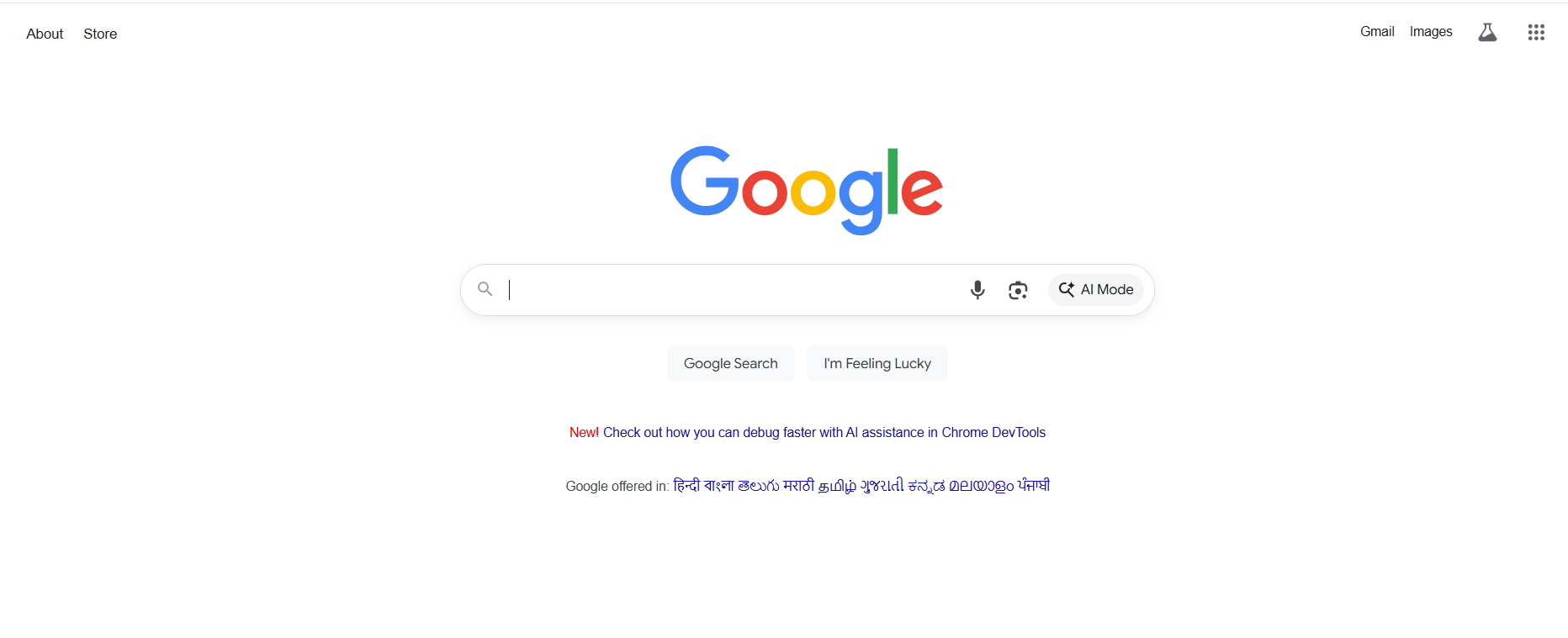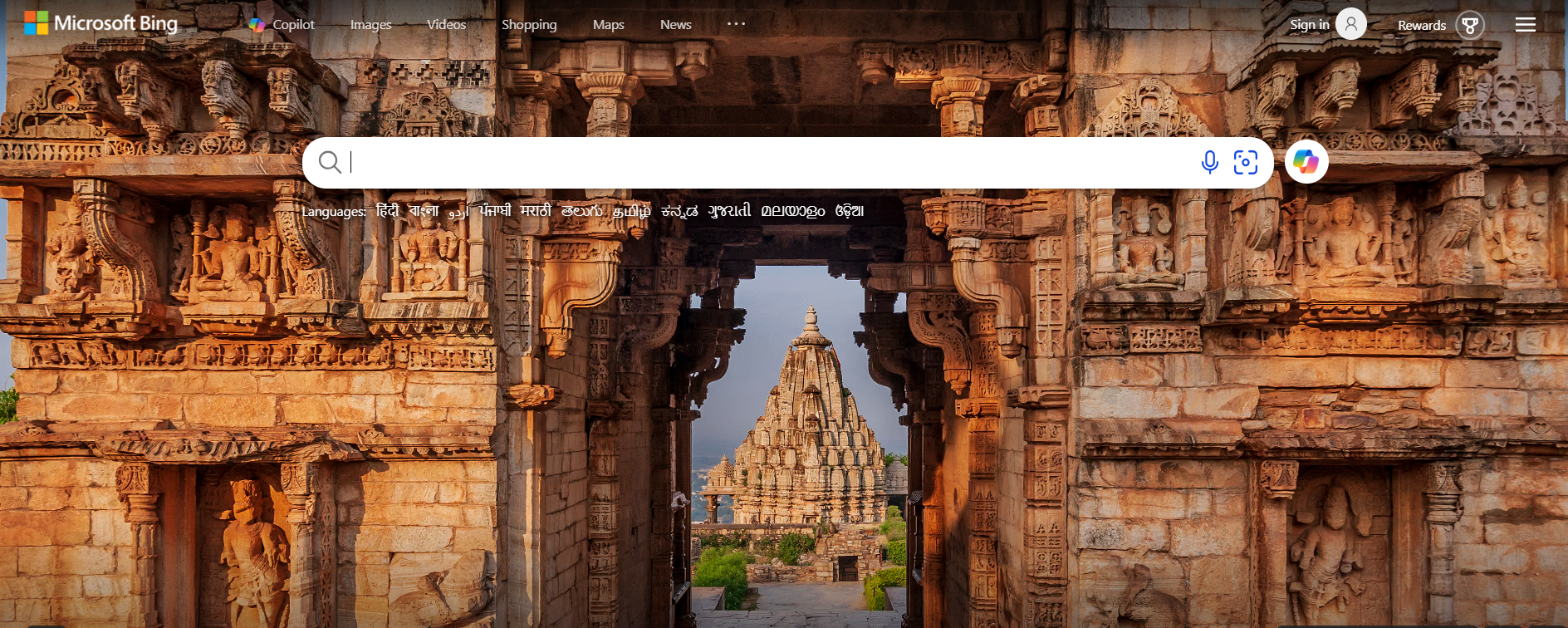Introduction
Search engine optimization (SEO) is a key component of digital marketing that aims to improve a website’s visibility on search engines. In today’s competitive online landscape, businesses and content creators strive to achieve higher rankings to attract organic traffic. As each platform operates with specific algorithms, user bases, and ranking factors, the choice of search engine plays a key role in shaping SEO strategies. Understanding which top search engines dominate the market and how to optimize for them is essential for long-term success. This comprehensive guide explores the unique characteristics of the leading search engines and actionable strategies to boost SEO performance on these platforms.
SEO involves a combination of technical on-page and off-page practices designed to align with search engine algorithms. These algorithms prioritize relevance and authority over user experience, making it important to create content and website structure accordingly. By focusing on the top search engines, businesses can ensure that their content reaches the maximum audience. This article explores the most influential search engines, including Google, Bing, YouTube, Baidu, and Yandex, and provides detailed insights into optimization for each.
Why Top Search Engines Matter for SEO
Search engines serve as the gateway to the internet, connecting users to relevant information. The top search engines control most of the global search traffic, making them important for SEO. Each platform has its own algorithm that evaluates websites based on factors such as content quality, user engagement, and technical performance. By optimizing for these platforms, businesses can improve their rankings and increase click-through rates and conversions.
The dominance of specific search engines varies by region and audience. For example, Google has over 90 percent of the global market share, but platforms like Baidu and Yandex are leaders in specific markets. Understanding these differences allows marketers to prioritize their efforts based on their target audience. Additionally, emerging trends like voice search AI-driven algorithms and video content are reshaping how top search engines rank content, requiring SEO professionals to adapt their strategies.
Top Search Engines for SEO Optimization
Google is the undisputed leader among the top search engines, controlling the majority of global search traffic. Its algorithm is highly sophisticated, prioritizing user intent, content quality, and technical optimization. Google’s ranking factors include relevance authority, mobile friendliness, and page speed. To succeed on Google websites need to deliver valuable content, follow technical best practices, and build a strong backlink profile.
Key Features of Google's Algorithm
Google’s algorithm is constantly evolving with updates like Core Web Vitals and BERT, focusing on user experience and natural language processing. Core Web Vitals measures loading speed, interactivity, and visual consistency, while BERT enhances Google’s understanding of contextual queries. These updates underscore the need for fast-loading mobile-optimized websites with high-quality content.
Google SEO Tips
- Create high-quality content: Develop in-depth content that comprehensively addresses user questions. Use keyword research tools like Google Keyword Planner to identify relevant terms and include them naturally.
- Leverage structured data: Implement schema markup to increase search result visibility with rich snippets like reviews, FAQs, or product information.
- Optimize for mobile: Make sure your website is responsive and provides a seamless experience across all devices as Google uses mobile-first indexing.
- Improve page speed: Use tools like Google PageSpeed Insights to identify and fix performance bottlenecks to ensure fast loading times.
- Build authoritative backlinks: Get links from reputable websites to boost domain authority as backlinks are a key ranking factor.
- Focus on user experience: Design intuitive navigation clear calls to action and engaging content to reduce bounce rates and increase dwell time.
Advanced Google SEO Strategies
For advanced SEO, consider optimizing for featured snippets that appear at the top of search results. Create content with clear titles, short answers, and lists to increase your chances of being featured. Additionally, prioritize E-A-T (Expertise, Authoritativeness, Trustworthiness) by showing author credentials and citing reliable sources. Regularly audit your website using tools like Google Search Console to monitor performance, identify crawl errors, and track keyword rankings.
Bing
Bing Microsoft’s search engine is a major player in the top search engines, especially in the United States and older demographics. Although it has a smaller market share than Google, Bing offers unique opportunities for SEO. Its algorithm places a strong emphasis on on-page elements such as meta tag keyword density and social signals. Bing also integrates with platforms such as LinkedIn and Microsoft Advertising, making it valuable for B2B businesses.
Key Features of Bing Algorithm
Bing’s algorithm prioritizes clear keyword usage, exact match domains, and social engagement. Unlike Google, Bing places less emphasis on backlinks and more emphasis on user signals such as on-page optimization and click-through rate. It also rewards websites with high-quality visual and multimedia content.
Tips for Bing SEO
- Optimize meta tags: Create compelling meta titles and descriptions with targeted keywords to improve click-through rate.
- Use exact match keywords: Include primary keywords in page titles, titles, and content while avoiding overuse.
- Use social signals: Promote content on social media platforms to increase engagement, as Bing considers social activity in rankings.
- Include multimedia: Use high-quality images and videos with descriptive alt text to enhance content appeal.
- Ensure a clean site structure: Maintain a logical hierarchy with clear URLs and easy navigation to improve crawlability.
- Use Bing Webmaster Tools: Monitor performance to track keywords and submit sitemaps to ensure proper indexing.
Advanced Bing SEO Strategies
Focus on local SEO on Bing by claiming and optimizing your Bing Places for Business listing. This is especially effective for businesses targeting a local audience. Additionally, experiment with multimedia content like infographics and interactive elements to increase engagement. Visibility on Yahoo also improves as Bing enables Yahoo search results to be optimized for Bing.
YouTube
The world’s largest video sharing platform YouTube is a powerhouse among the top search engines. With billions of monthly users, it offers enormous potential to drive traffic through video content. YouTube’s algorithm prioritizes watch time engagement and relevance, which requires creating engaging videos that engage viewers.
Key Features of YouTube’s Algorithm
YouTube’s algorithm evaluates metrics such as watch time audience retention click-through rate and engagement signals such as likes comments and shares. It also takes into account video metadata, including title descriptions and tags. Optimizing for YouTube requires a mix of creative content and technical SEO.
Tips for YouTube SEO
- Craft Keyword Rich Titles: Include primary keywords in video titles while keeping them catchy and concise.
- Write a Detailed Description: Use the description box to provide context, include keywords, and add relevant links.
- Design eye-catching thumbnails: Create custom thumbnails that attract clicks and reflect the video content.
- Add closed captions: Include accurate captions and transcripts to improve accessibility and discoverability.
- Drive engagement: Encourage viewers to like, comment, and subscribe to increase engagement.
- Use playlists and end screens: Organize videos into playlists and add end screens to promote relevant content.
Advanced YouTube SEO Strategies
To maximize YouTube SEO, analyze trending topics in your niche using tools like Google Trends or YouTube Analytics. Create content that matches these trends to capture timely traffic. Also take advantage of YouTube Shorts for short-form content to reach younger audiences. Collaborate with influencers or use cross-promoted videos to increase your reach and build authority.
Baidu
Baidu dominates the Chinese market among the top search engines for businesses in Asia. With over 70 percent market share in China, Baidu requires a tailored SEO approach due to its unique algorithm and regional focus. Content must be in Mandarin, hosted on Chinese servers, and must comply with local regulations.
Key Features of Baidu’s Algorithm
Baidu’s algorithm prioritizes websites hosted locally, with content in Mandarin and compliance with Chinese internet policies. It also values fast loading speeds and mobile optimization. Unlike Google, Baidu places less emphasis on backlinks and more on content relevance and user experience.
Baidu SEO Tips
- Host Locally: Use Chinese servers or a content delivery network (CDN) to ensure fast access and compliance.
- Translate Content: Create Mandarin content with local keywords and cultural relevance.
- Comply with the Rules: Comply with China’s internet censorship laws to avoid fines or bans.
- Optimize for mobile: Make sure your website is responsive, as mobile usage dominates in China.
- Use Baidu Webmaster Tools: Submit sitemaps, monitor performance, and track keyword rankings.
- Leverage Baidu products: Integrate with Baidu services like Baidu Maps or Baidu Knows to increase visibility.
Advanced Baidu SEO Strategies
For advanced optimization, focus on local link building by partnering with Chinese websites or directories. Include Baidu-specific features like paid advertising or Baidu encyclopedia entries to build credibility. Update content regularly to match Baidu’s preference for new content and monitor competitors using tools like Baidu Index.
Yandex
Yandex is the leading search engine in Russia and parts of Eastern Europe, holding a significant share of the top search engines in these regions. Its algorithm emphasizes local content, user behavior, and regional relevance. Yandex is especially effective for businesses targeting Russian-speaking audiences.
Key features of the Yandex algorithm
Yandex considers behavioral factors such as dwell time bounce rate, and regional relevance. It also prioritizes content from Russian- and mobile-optimized websites. Yandex’s algorithm focuses less on backlinks than Google’s but does place a premium on internal linking and site structure.
Yandex SEO Tips
- Optimize for Russian: Create content in Russian with region-specific keywords and cultural context.
- Focus on user behavior: Improve dwell time and reduce bounce rate with engaging content and intuitive design.
- Use Yandex Metrica: Track user behavior and analytics to optimize performance.
- Ensure mobile compatibility: Design a responsive website since mobile usage is high in Yandex’s markets.
- Build internal links: Build a strong internal linking structure to improve crawlability and user navigation.
- Submit to Yandex Webmaster: Ensure proper indexing by submitting a sitemap and monitoring for errors.
Advanced Yandex SEO strategies
Take advantage of local SEO by optimizing for Yandex Maps and business listings to perform well on Yandex. Create content that addresses regional trends and preferences using tools like Yandex Wordstat for keyword research. Additionally, experiment with Yandex Zen to publish articles and drive traffic to your website.
Emerging Trends in SEO for Top Search Engines
The SEO landscape is rapidly evolving due to advances in technology and changes in user behavior. Top search engines are adopting AI voice search and visual search to enhance the user experience. To stay ahead, it is essential to adapt to these trends and align strategies with the preferences of each platform.
Voice Search Optimization
Voice search is on the rise with the rise of smart speakers and virtual assistants like Google Assistant and Alexa. Optimization for voice search involves targeting conversational long-tail keywords and question-based queries. For example, instead of optimizing for shopping shoes, optimize for where can I buy running shoes near me. Make sure the content is concise and directly answers users’ questions to rank in voice search results.
Tips for Voice Search SEO
- Use natural language in your content to match spoken queries.
- Optimize for featured snippets as they are often read out loud in voice results.
- Create FAQ pages to address common questions in your niche.
- Ensure fast loading speeds as voice search prioritizes fast responses.
AI and Semantic Search
AI-powered algorithms like Google RankBrain and BERT enable top search engines to better understand user intent. Semantic search focuses on context rather than exact keywords so that content needs to cover a broad range of topics. Use topic clusters where pillar pages show expertise and relevance by linking to related subtopics.
Tips for Semantic Search SEO
- Create in-depth pillar content that covers a broad range of topics in your niche.
- Use relevant keywords and synonyms to increase local relevance.
- Structure content with clear titles and subheadings for readability.
- Include LSI Latent Semantic Indexing keywords to support key terms.
Visual and Video Search
Visual search and video content are gaining importance on top search engines like Google and YouTube. As YouTube’s video dominance grows, Google Lens allows users to search using images. Optimize images with descriptive alt text and file names, and create engaging video content to capture this traffic.
Tips for Visual and Video Search SEO
- Use high-quality images with keyword-rich alt text and file names.
- Compress images to improve page speed without sacrificing quality.
- Create video content that matches user intent and trending topics.
- Optimize video metadata with title descriptions and tags.
Zero-Click Search
Zero-click searches are on the rise, where users find answers directly on the search results page. Top search engine featured snippets display knowledge graphs and quick answers that reduce the need for clicks. To compete, optimize for the zero position by structuring content in a list table or in short paragraphs that answer specific questions.
Tips for zero click SEO
- Identify question-based keywords using tools like AnswerThePublic.
- Structure content in bullet points or numbered lists to qualify snippets.
- Provide clear, concise answers to common questions in your niche.
- Use schema markup to increase snippet visibility.
How to Choose the Right Search Engine for Your SEO Goals
Choosing the best of the top search engines depends on the specificity and geographic focus of your target audience. Here are some key considerations to guide your decision:
- Global Reach: Google is a popular platform for international audiences due to its large market share. If your goal is broad visibility, give Google a try.
- Video Content: YouTube is ideal for businesses that leverage video marketing. Its broad user base and engagement metrics make it a top choice for visual content.
- Regional Markets: Focus on Baidu for China to attract local audiences. Yandex is the platform of choice for Russia and Eastern Europe.
- B2B or Business Audiences: Bing integrates with the LinkedIn and Microsoft ecosystems, making it effective for B2B marketing.
- Specific Needs: Analyze your audience’s search behavior using tools like Google Analytics or SimilarWeb to identify which platforms they use the most.
Conduct in-depth audience analysis to understand demographic preferences and regional trends. Build your SEO strategy to prioritize platforms relevant to your goals and diversify efforts across multiple search engines for maximum results.
Common SEO Mistakes to Avoid
Despite the best strategies, mistakes can hinder performance on top search engines. Avoid these common pitfalls to ensure success:
- Ignoring Mobile Optimization: Failing to optimize for mobile can tank rankings due to the trend toward mobile-first indexing on Google and similar trends on other platforms.
- Keyword Stuffing: Overuse of keywords interferes with readability and can lead to penalties on Google, Bing, and other search engines.
- Ignoring Local SEO: Ignoring local keywords and compliance for region-specific platforms like Baidu and Yandex can limit visibility.
- Outdated Content: Failing to refresh content reduces relevance as search engines prioritize fresh information.
- Poor Technical SEO: Issues like broken links slowing down loading speed or improper indexing hurt performance on all platforms.
- Neglecting analytics: Not using tools like Google Search Console, Bing Webmaster Tools, or Yandex Metrica can leave you with performance gaps.
To avoid these mistakes and maintain strong SEO performance, regularly audit your website monitor analytics and stay up to date with algorithm changes.
Best Practices for Multi-Platform SEO
Take a unified yet tailored approach to succeed in the top search engines. Here are the best practices for optimizing for multiple platforms:
- Conduct comprehensive keyword research: Use tools like Ahrefs SEMrush or platform-specific tools like Google Keyword Planner or Baidu Index to identify high-value keywords for each search engine.
- Create high-quality content: Develop valuable, engaging, and tailored content for each platform audience while maintaining consistency in branding.
- Optimize technical SEO: Ensure fast loading speeds, mobile responsiveness, and proper indexing across all search engines.
- Leverage analytics: Use platform-specific analytics tools to track performance, identify trends, and improve strategies.
- Build a diverse backlink profile: Get links from authoritative sites relevant to each search engine market to build credibility.
- Stay up to date with trends: Monitor algorithm updates and emerging trends like AI and voice search to stay ahead of the curve.
By balancing platform-specific optimization with an integrated strategy, you can increase visibility and drive traffic from multiple top search engines.
Conclusion
Optimizing for the top search engines is a dynamic and multifaceted process that requires understanding the unique requirements of each platform. Google is still the global leader with unmatched reach, while Bing, YouTube, Baidu, and Yandex offer opportunities in specific markets and formats. By implementing the strategies outlined above, from creating high-quality content to optimizing for mobile and voice search, you can increase your SEO performance and achieve your digital marketing goals.
Start by analyzing your target audience and prioritizing the search engines that are most relevant to them. Invest in platform-specific tools that leverage quality content and adapt to emerging trends. With a strategic approach, you can harness the power of the top search engines to drive meaningful traffic, build brand authority, and achieve long-term success in the ever-evolving world of SEO.
FAQs
What is SEO and why is it important for websites?
SEO, or search engine optimization, is the practice of increasing a website’s visibility on search engines like Google and Bing to attract more organic traffic. It involves optimizing content, structure, and technical elements to align with search algorithms that prioritize user intent and relevance. By implementing effective SEO strategies, websites can improve their rankings, leading to higher click-through rates and better user engagement. This organic growth reduces reliance on paid advertising, providing long-term cost savings for businesses. Furthermore, SEO helps build credibility, as users trust high-ranking results from authoritative sources. Regularly updating SEO practices ensures the ability to adapt to evolving algorithms, maintaining a competitive edge in the digital landscape. Ultimately, strong SEO drives meaningful interactions, conversions, and revenue by connecting users with valuable content when they need it.
Which top search engines should businesses prioritize for SEO efforts?
Among the top search engines, Google has the largest global market share, making it the primary focus for most SEO strategies due to its sophisticated algorithms that emphasize quality and user experience. Bing follows closely, especially for demographics like older users and B2B sectors, where optimizing meta tags and social signals can yield better results. YouTube, as a video-dominant top search engine, is a must-have for visual content creators, which prioritize watch time and engagement metrics. For regional dominance, Baidu excels in China in terms of local hosting and Mandarin content requirements, while Yandex leads in Russia, evaluating behavioral factors and localized keywords. Prioritizing these top search engines based on the demographics of the target audience ensures broad reach and tailored optimization. Diversifying efforts across platforms increases visibility without spreading resources too thinly.
How does Google’s algorithm affect SEO optimization strategies?
Google’s algorithm, supported by updates like Core Web Vitals and BERT, evaluates websites on user experience, content relevance, and technical performance to deliver the most useful results. It prioritizes mobile-friendliness, fast loading speed, and E-E-A-T (Experience, Expertise, Authority, Trustworthiness) to combat low-quality content. Therefore, SEO strategies should focus on creating in-depth, original articles that answer specific questions and include structured data for rich snippets. Backlinks from reputable sites remain important for building authority, but natural integration is key to avoiding penalties. Regularly auditing sites with tools like Google Search Console can help identify issues like crawl errors or duplicate content. Converting to meaningful search means covering topic clusters broadly, increasing contextual understanding. Overall, aligning with Google’s user-centric approach ensures sustainable rankings and traffic growth.
What role does Bing play among the top search engines for SEO?
Bing stands out among the top search engines by emphasizing on-page elements such as accurate meta descriptions and keyword-rich titles, making it more forgiving of exact-match optimization than Google. Its integration with Microsoft services, including LinkedIn, increases visibility for B2B content by emphasizing social signals and multimedia. Optimization for Bing includes clean site architecture, high-quality images with alt text, and use of Bing Webmaster Tools for sitemap submission and performance tracking. Unlike Google, Bing places less emphasis on domain age and exact keywords, which gives new sites a chance to compete effectively. Businesses targeting American audiences benefit from its 10-15% market share, especially in areas such as finance and healthcare. The combination of Bing SEO and paid Microsoft ads can strengthen organic efforts. In short, Bing provides a complementary channel for various SEOs, which increases the overall digital presence.
Why is YouTube considered the top search engine for video SEO?
YouTube holds its position as the top search engine because its billions of monthly users search for video content, where its algorithm prioritizes watch time, viewer retention, and interaction over views alone. Optimization includes keyword-optimized titles, detailed descriptions with timestamps, and creating custom thumbnails that increase click-through rates. As part of Google’s ecosystem, YouTube SEO impacts broad search visibility, with videos often appearing in universal results. Encouraging comments, likes, and subscriptions signals relevance, while playlists and end screens increase session duration. Transcripts and closed captions improve accessibility and keyword indexing, helping with discoverability. For brands, YouTube drives traffic to websites through linked descriptions and cards. Mastering these tricks makes YouTube a powerful SEO asset, combining entertainment with informational value to deeply engage audiences.
How can businesses optimize for Baidu, the top search engine in Asia?
Baidu, a major top search engine in China, requires websites to be hosted on local servers to prioritize Mandarin content and cultural relevance for fast speed and compliance with regional regulations. SEO strategies include accurately translating pages, using Baidu-specific keywords through its index tool, and submitting sitemaps through Webmaster Tools. Mobile optimization is important due to high smartphone usage, as is ensuring content freshness that matches Baidu’s preference for updated material. Linking from Chinese directories and integrating Baidu maps increases local visibility. Avoiding Western-centric designs helps build user trust, as Baidu severely penalizes non-compliant sites. For e-commerce, optimizing product pages with schema markup improves rich results. Targeting Baidu effectively opens up a huge market in Asia, complementing global SEO efforts.
What makes Yandex unique among the top search engines for SEO?
Yandex differentiates itself among the top search engines by focusing on user behavior metrics such as dwell time and bounce rates, with regional relevance for Russian and Eastern European audiences. Its algorithm optimizes for Russian-language content, mobile compatibility, and internal linking structures that intuitively guide users. Tools like Yandex Metrica provide detailed analysis to refine strategies based on real engagement data. Optimization includes ensuring fast page loads to meet region-specific keywords and behavioral standards in WordStat. Yandex Zen integration allows for content syndication, driving additional traffic. Like global engines, it reduces the emphasis on backlinks but rewards trusted local sources. Businesses entering this market benefit from Yandex’s tailored approach, driving authentic connections and sustainable growth.
How is AI impacting SEO trends on top search engines?
As seen in Google’s RankBrain and Bing’s AI enhancements, AI is revolutionizing SEO on top search engines by empowering meaningful insights and personalized results that prioritize intent over exact keywords. Content creators should now create topic clusters that cover subtopics in depth to fulfill AI-driven queries, reducing their reliance on single-term optimization. Tools like ChatGPT help with outlines and ideation, but human oversight ensures originality to avoid penalties for duplicate content. Voice search integration requires conversational long-tail keywords, while zero-click features like AI Overviews reward concise, structured answers. Across platforms, AI analytics predict trends, enabling proactive adjustments. Adopting AI streamlines workflows without compromising quality, keeping sites in a favorable position in evolving landscapes.

























































